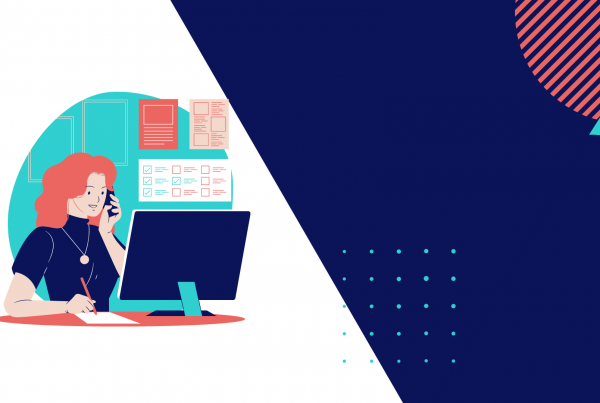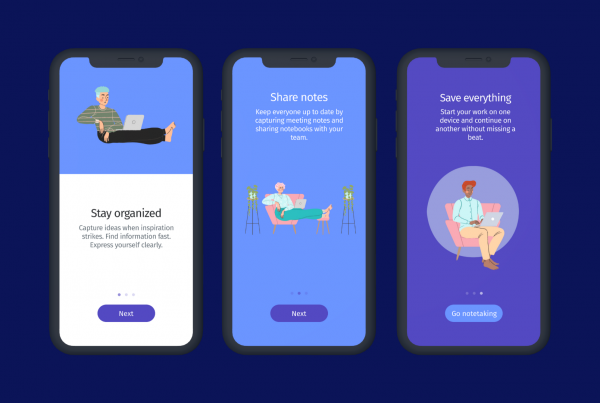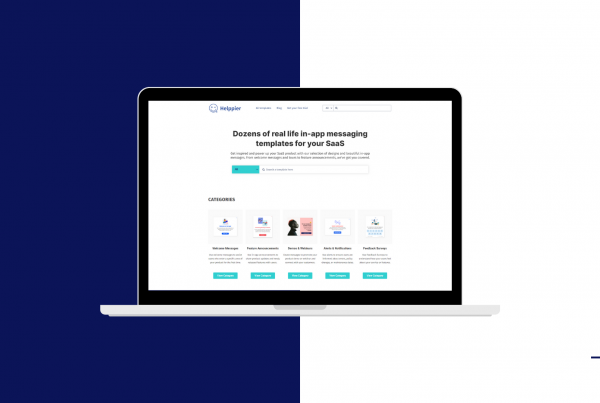Article updated on May 12, 2020.
An interactive user guide might not solve all your business problems, but it sure helps.
User guides have come along way. It first started as handbooks of information, with step-by-step instructions printed in several languages and tiny font sizes. These manuals were made to assist us when we had issues using a product. Be it a coffee machine or a new flat television. But, to be honest, rarely used, and ineffective.
Then, it became digital. User guides evolved to FAQ pages. A page inside a company’s website where users can find answers to the most common questions regarding a service. Although these pages are organized and more visually appealing, users still need to contact a support team or search for video tutorials to get things done.
Nowadays, user guides are becoming a lot smarter and interactive. With digital transformation on their shoulders, companies are building interactive guides that run on top of their website or software. Leading the way and helping users understand how their product works.
So what is an interactive user guide?
A small rectangular pop-up window that presents a brief description of a specific element on a web page (image, button, form field, text).
A help message that interacts with user actions, providing on-page contextual assistance when using a software, website, or application. It allows automating customer support and onboarding, providing more autonomy to the user when using a new platform for the first time, or having doubts.
Types of interactive user guides

The most common types of interactive user guides are product tours and tooltips. Both are used directly on top of a web page or application so that users don’t need to search for instructions and learn while using a platform at the same time. These messages can be personalized to the user and recognize specific actions like a click or mouseover.
Product tours or Walkthroughs work pretty much like a GPS, but for websites. Interactive step-by-step messages that guide users through a specific workflow, highlighting the areas they need to go to achieve a certain goal. GoAnimates, for example, provides on-page tours to teach users how to create their first video.
Tooltips are contextual help messages that are placed across a website or application to explain different areas. You often see tooltips in form fields but platforms like Feedly use it to provide hints and highlight the hotspots they want users to notice. In the end, avoiding any confusion and improving the overall experience.
How it can help my business?
Lower support costs

You probably noticed that most of your queries are already mentioned on your FAQ page or support documentation. But for some reason, customers keep contacting your team. Why? Because it takes too much time to read instructions and change tabs.
Interactive user guides help automate customer support, as they can answer common questions that don’t require intelligence or decision-making. If at some point, the user is lost and can’t achieve a specific goal, they can access these helping points for real-time guidance.
By providing self-service tools such as product tours and tooltips on your website, users can follow instructions while interacting with your platform at the same time. Actually, according to Zendesk, 67% of users prefer self-service than speaking with the company. This reduces upcoming support calls and eliminates the need to create further support documentation.
Get qualified leads
In a previous article, I mentioned how you can use in-app messages to get more engagement after a user signs up. But you can also use guides to generate more leads for your online business.
Interactive guides are versatile. It can be used to highlight new products and promotions to catch the user’s attention and generate interest. Furthermore, with better user experience, you will get more customer loyalty and marketing word of mouth. According to PWC, 73% of consumers say a good experience is key in influencing their brand loyalties.
A great strategy would be to set up guides on a pricing page to entice users to purchase a specific plan. Or even explain each one of its features. On a form page, you can set tooltips to assist the user and accelerate the payment process. Likewise, you can create onboarding messages that lead users to sign up for your service.
Creativity is the way to go if you want to stand out from the competition.
Retain users on your website

“In the world of internet customer service, it’s important to remember your competitor is only one mouse click away.” – Doug Warner
Users don’t like what they cannot understand. With so many competitors out there, it becomes crucial to provide an exceptional customer experience. And it all starts with your website.
If you want to convince first-time users, build personalized welcome messages that show the value of your services. In a previous article on what is user onboarding, we mentioned that this is the moment to show value and cause a good first impression. You will want to eliminate any frustration and make clear that what you’re offering is better. Before users switch to a competitor’s page.
You can also set up automated popups to remind users of a special offer. Or hit them with a funny message.
Simplify Employee Onboarding and Training
A good employee onboarding process can improve employee retention by 82% but traditional employee training is time-consuming and expensive. You need to hire an instructor, organize a meeting room, prepare PowerPoint presentations, give away notebooks and pens and the list just goes on. And above all that effort, it’s ineffective. As employees forget information and can’t be productive right away. And if you’re hiring Millenials the challenge is even bigger.
As an alternative, if you want to improve your employee onboarding strategy while reducing costs, you can use guides as on-page lectures. This way, new hires can learn while working on top of any corporate platform or website at any time, anywhere, and at their own pace.
Recently we shared an article about onboarding new employees online. Although this process is complex, by choosing tools like Helppier, you can create online guides to simplify training in internal platforms. Or improve knowledge sharing, for example.
How does it work?
People often ask how to create a user guide for a website – the answer is pretty simple. If you’re using the right tools, you don’t even need to code!
With tools like Helppier, you can create interactive manuals on top of your platform, through a point and click system. Meaning that you can select the elements directly on your website, write your message, save, and then publish for your users to access.
It goes pretty much like this:
- Record a step;
- Write your content;
- Define guide actions;
- Publish on your website.
To add Helppier to your website, you only need to paste a short code snippet into your website’s layouts or install our Chrome extension. And that’s it. You will be able to create interactive user guides in a few minutes.







